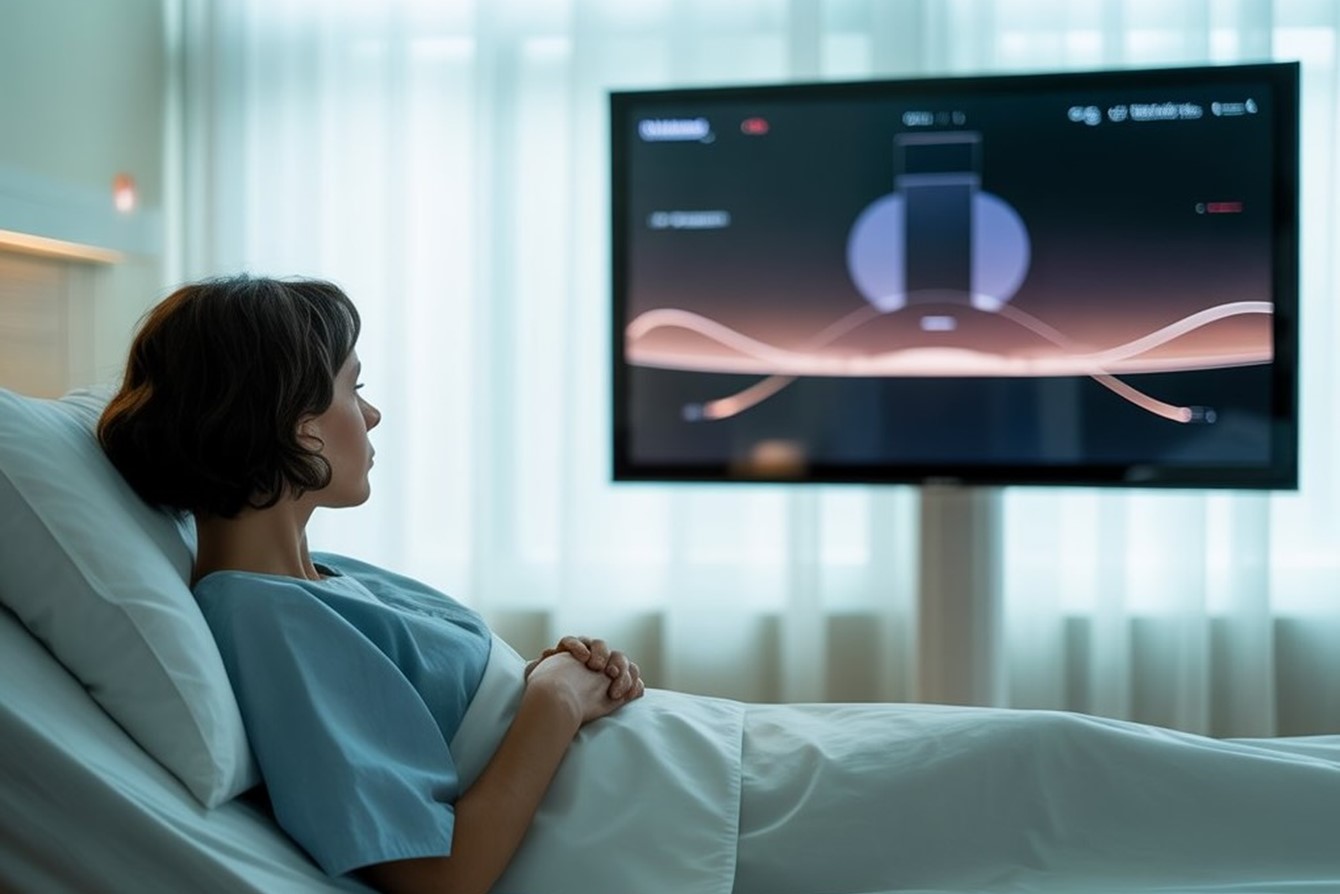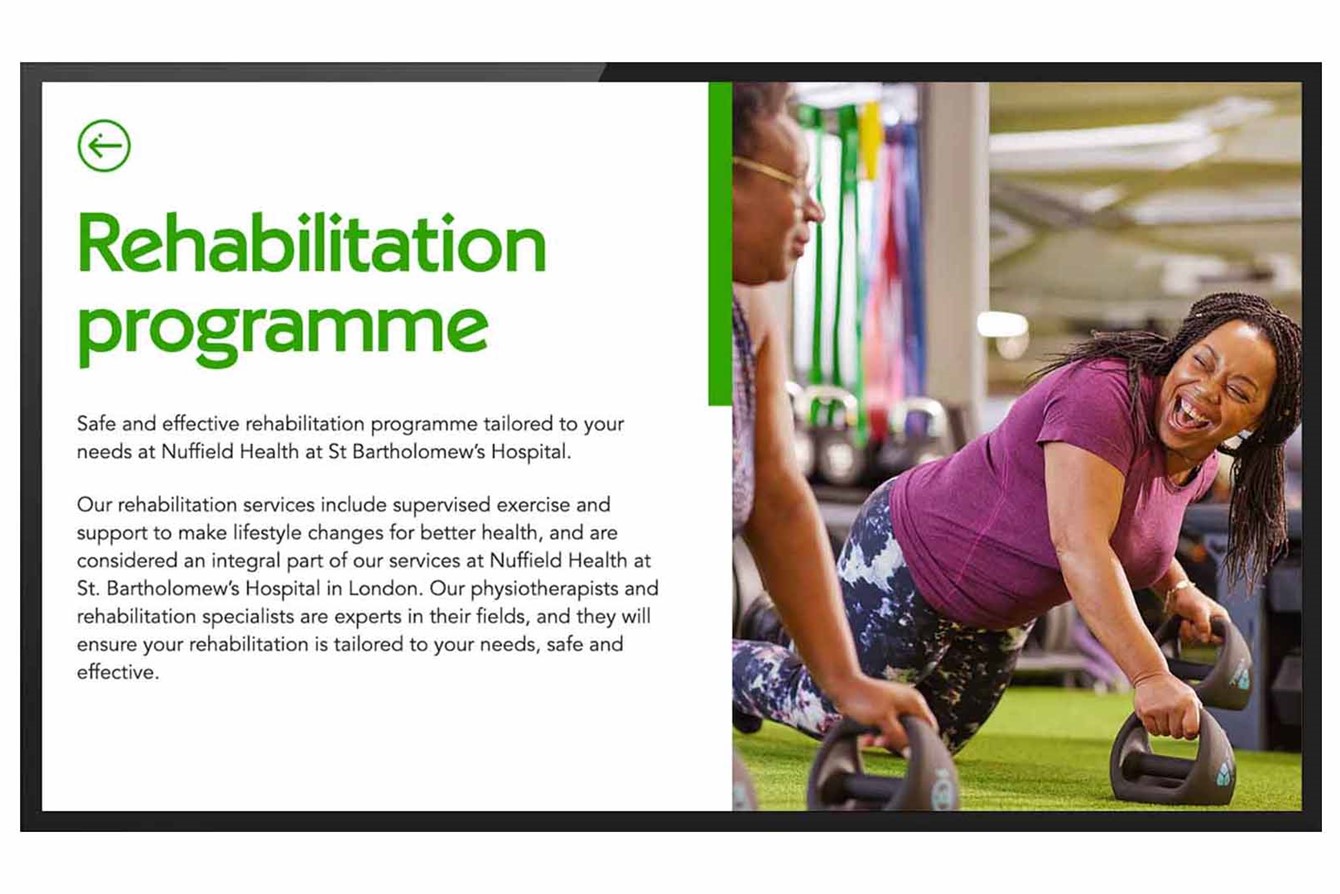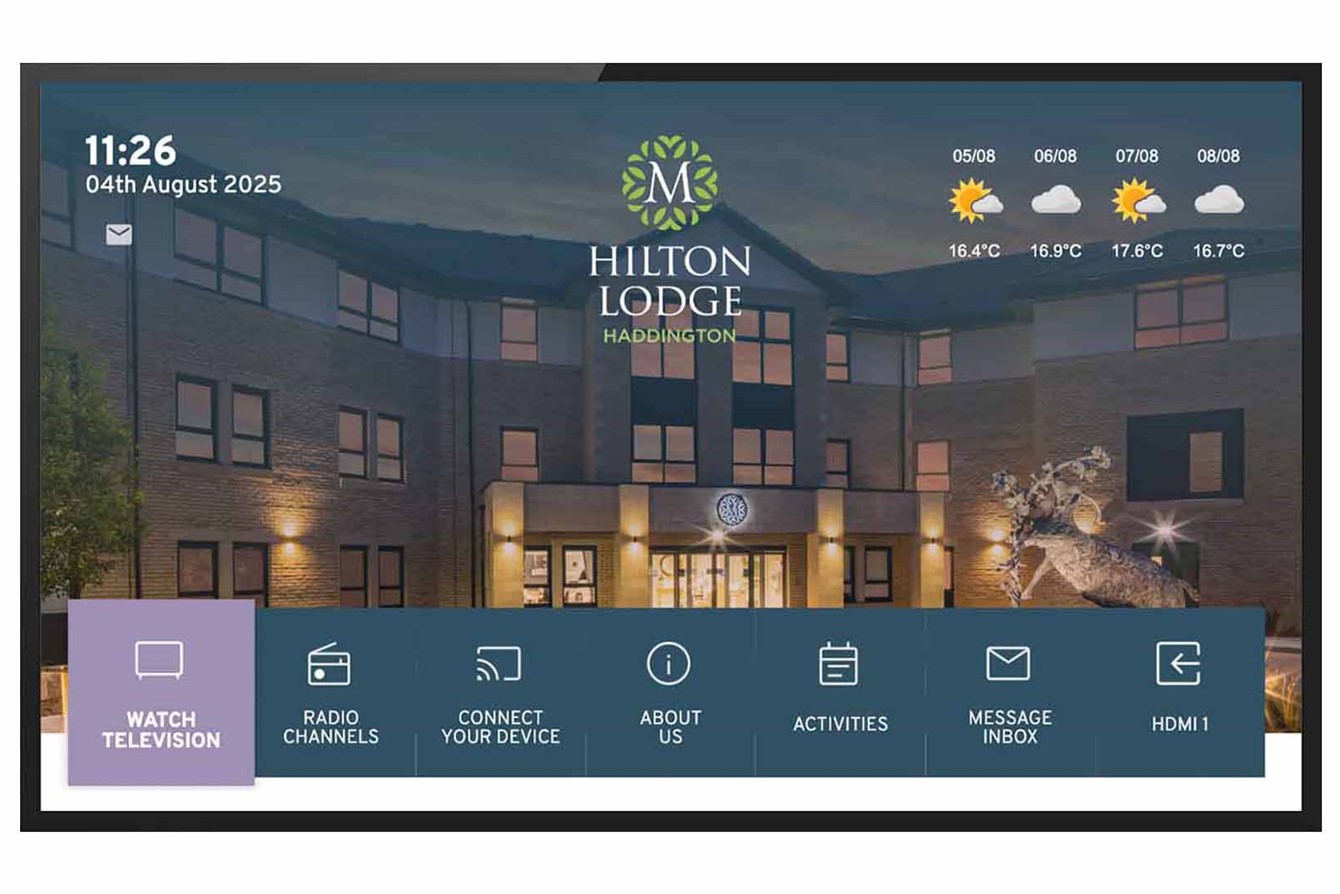Behind the Screens: What Makes a Great Hospital TV System?
From Passive Entertainment to Patient Care: What Makes a 2025 Hospital TV System Stand Out?

More Than Just a TV...
Picture this: You’re lying in a hospital bed, anxious about an upcoming procedure. The sterile environment, the beeping monitors, the unfamiliar routines—it’s overwhelming. You reach for the remote, hoping to escape into a favourite show. But instead, you’re met with a low-resolution screen playing a slightly grainy daytime talk show.
For too long, hospital TVs have been little more than background noise—small screens, offering a handful of local channels and little else. But that’s changing fast.
Today, hospital TV systems are transforming. No longer just a source of passive entertainment, they’re becoming active tools for patient engagement, education, comfort, and care.
So, what makes a truly great hospital TV system in 2025?
Spoiler: it’s about far more than picture quality and channel count. Let’s go beyond the screen to explore the features that turn a basic television into a vital part of the modern patient experience.
1. Seamless EMR Integration
A top-tier hospital TV system can pull in data from electronic medical records (EMRs) to provide personalised experiences. This means a patient can:
- View their care team’s names and photos
- Receive condition-specific education videos
- Access post-surgery care instructions directly on-screen
This integration transforms the TV from a passive entertainment device into an active part of the care delivery process. When patients have immediate access to their care information, they’re more likely to engage with their treatment plan and feel confident about their care. For staff, that means fewer questions and more time focused on direct patient care.

2. Interactive Functionality
Modern systems should go beyond passive viewing. Look for interactive features like:
- Meal ordering directly through the TV
- Surveys and feedback forms
- Language and accessibility options
- TV-based video chat for virtual visits
These interactive capabilities provide more than just convenience—they give patients agency during a time when they often feel powerless. The ability to make choices, provide feedback, and connect with others helps combat the isolation and helplessness that hospital stays can create. This sense of control often translates directly into improved patient satisfaction scores and better overall experience ratings.
This integration transforms the TV from a passive entertainment device into an active part of the care delivery process. When patients have immediate access to their care information, they’re more likely to engage with their treatment plan and feel confident about their care. For staff, that means fewer questions and more time focused on direct patient care.
3. Entertainment Options Patients Actually Want
Today’s patients expect streaming services just like they have at home. The best systems offer:
- Netflix, Prime, YouTube, and other apps
- Music, games, and guided meditation
- Access to hospital radio or custom TV channels
Beyond entertainment value, familiar streaming services provide psychological comfort during stressful hospital stays. When patients can access their usual shows, music, or relaxation content, it helps normalise an otherwise clinical environment. This familiarity can reduce anxiety, improve mood, and even support better rest—all contributing factors to faster recovery and higher satisfaction.
4. Remote Management & Analytics
From the facility side, a great hospital TV system allows centralised management of:
- Channel lineups
- Software updates
- Usage analytics
- Emergency messaging or announcements
This centralised approach eliminates the inefficiencies of managing hundreds of individual devices across a facility. IT teams can push updates overnight, adjust content based on usage patterns, and quickly respond to issues before they impact patient experience. The analytics also provide valuable usage insights, helping justify system investments and guide future upgrades.
5. Accessibility & Inclusivity
Hospitals serve diverse populations. That means systems should support:
- Multilingual interfaces
- Closed captioning and audio descriptions
- Large-text modes and voice navigation
- Adjustable remotes or touchless controls
Accessibility goes beyond compliance—it’s about equal access to information and entertainment for all patients. Inclusive systems empower patients to use TV features independently, reducing reliance on nursing staff for basic support and allowing clinical teams to focus on care.
6. Easy Integration With Hospital Wi-Fi and Infrastructure
Poor connectivity can kill the user experience. A great system works smoothly with existing hospital networks, minimises buffering, and offers:
- Secure, encrypted patient logins
- Minimal lag during peak usage
- Compatibility with both new and legacy infrastructure
Seamless integration is vital in healthcare, where system downtime can’t disrupt patient care. A well-integrated system reduces IT issues, ensures consistent performance during peak usage, and builds trust among patients and staff alike.

7. Custom Branding & Experience
Hospitals can use TV systems to reinforce their brand and care philosophy. Look for systems that allow:
- Custom welcome messages
- Branded screen layouts
- Local content or hospital-produced videos
This customisation capability allows hospitals to extend their care philosophy beyond clinical interactions into every patient touchpoint. When the TV system reflects the hospital’s values and messaging, it reinforces brand trust and creates a more cohesive care experience. Patients feel more connected to the facility and its mission, which can positively influence their perception of care quality overall.
More Than Just a TV
Hospitals can use TV systems to reinforce their brand and care philosophy. Look for systems that allow:
- Custom welcome messages
- Branded screen layouts
- Local content or hospital-produced videos
This customisation capability allows hospitals to extend their care philosophy beyond clinical interactions into every patient touchpoint. When the TV system reflects the hospital’s values and messaging, it reinforces brand trust and creates a more cohesive care experience. Patients feel more connected to the facility and its mission, which can positively influence their perception of care quality overall.
Get in touch
We're passionate about technology, proud of the work we do and would love to share our enthusiasm with you! Please feel free to get in touch to discuss our portfolio of products and services:
info@hospitaltv.co.uk or +44 (0)1403 783 483

